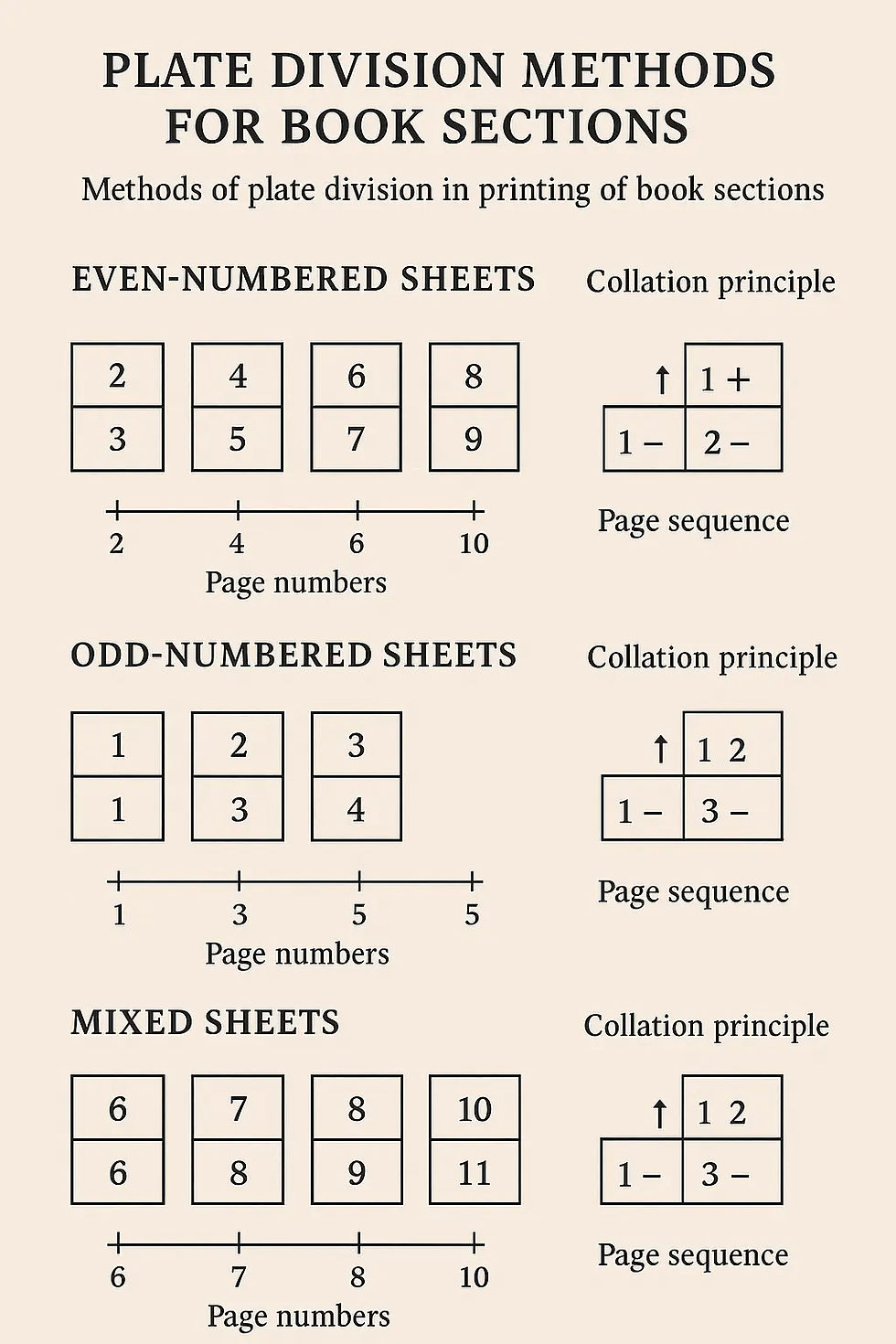Plate Division Methods for Book Sections
- ZXC Print
- Sep 15
- 2 min read
Updated: Sep 16
When it comes to professional book printing, one of the most important steps before layout is plate division. This process ensures that pages are arranged correctly on the printing plates so that when the sheet is printed and folded, the pages appear in the right order.

Two Main Printing Methods
There are two primary methods used for printing and binding book sections:
1. Turnover Plate Printing
In this method, the same plate can be used to print both the front and back sides of a sheet without changing the plate.
Example: In a 16mo (16-page) sheet, a 4-page-by-2-form turnover plate layout can be used for printing.
2. Overlay Plate Printing
In this method, after printing one side of the sheet, all plates must be changed before printing the other side.
Example: This is commonly used for 16-page book sections in a 25mo (25-page) sheet.
What Is Plate Division?
Plate division is the process of separating the page plates (arranged in page-number order) into those required for the front (+) and back (–) sides of the sheet.
This is a crucial step before layout (also called imposition or plate assembly).
Three Types of Plate Division
Plate division can generally be classified into three categories:
Even-numbered section plate division
Examples: 2-, 4-, 6-, 8-, or 16-page sections.
Odd-numbered section plate division
Examples: 1-, 3-, or 5-page sections.
Mixed section plate division
Examples: long 6-page, long 9-page, or long 10-page sections.
The Number-Line Principle
The rule of plate division can be illustrated using a number line.
Each point on the number line corresponds to a page number. These points are separated and assigned to the front (+) or back (–) side of the sheet, forming the correct page sequence for each side.
The “Principle of Plate Division” represents the general rule that applies to all sections of the same type.
The “Page Sequence Decomposition” shows the exact page arrangement for a specific section, clarifying which pages belong to the front plate and which belong to the back plate.
Front vs. Back Side
In this article:
The side containing the first and last pages of the section is called the front side (+).
The opposite side is called the back side (–).
Final Thoughts
Understanding plate division is essential for efficient printing in China or anywhere else in the world.
It ensures correct page ordering, reduces printing errors, and improves production efficiency.
Future articles will dive deeper into the number-line method and explore the specific characteristics of each type of plate division.





Comments